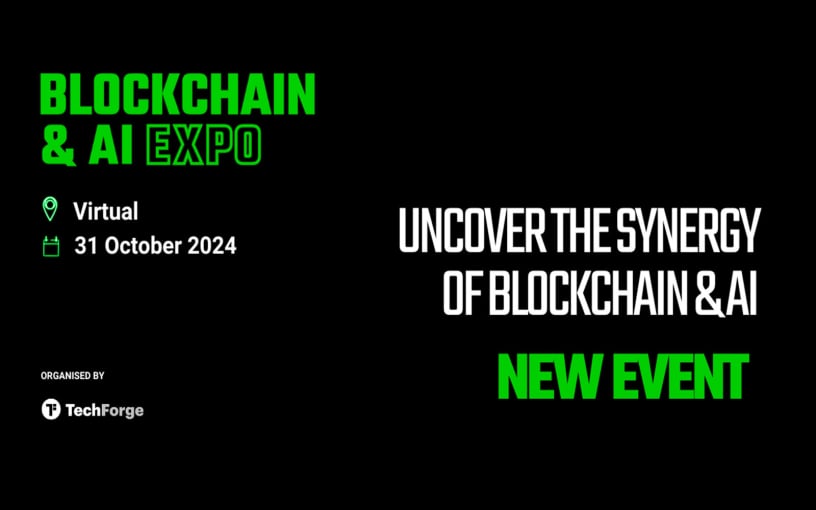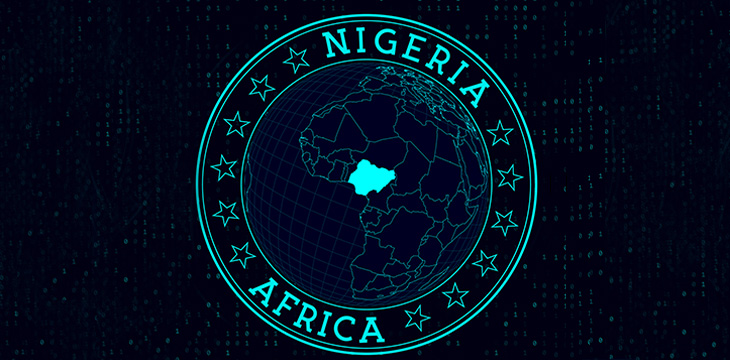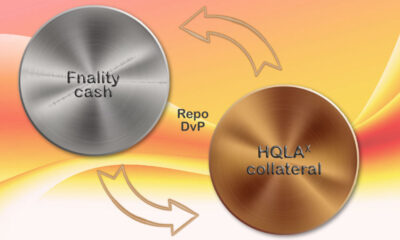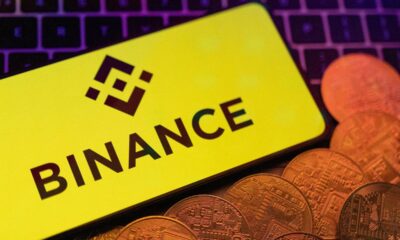News
Navigazione nell’ammissibilità del brevetto di invenzione Blockchain

INTRODUZIONE
La blockchain sta diventando centrale più che mai nei portafogli di brevetti FinTech, ma è più difficile ottenere protezione sulla blockchain rispetto alla maggior parte delle altre tecnologie. La decisione della Corte Suprema degli Stati Uniti nel caso Alice v. CLS Bank (2014) ha rafforzato i limiti su quali argomenti possono beneficiare della protezione brevettuale ai sensi dell’articolo 35. USC §101. Le odierne tecnologie basate su software non sempre superano il test in più parti di Alice per escludere le “idee astratte” dalla brevettabilità. Le imprese che sviluppano la tecnologia blockchain si trovano spesso a chiedersi se le loro invenzioni principali possano essere protette. Questo articolo spiega il nostro approccio per rispondere a queste domande.
La buona notizia è che le domande di brevetto blockchain ben redatte possono superare l’esame presso l’Ufficio brevetti e marchi degli Stati Uniti (USPTO). Negli ultimi dieci anni sono state depositate quasi 14.000 domande di brevetto basate su blockchain e sono stati rilasciati quasi 10.000 brevetti basati su blockchain.
Inizieremo con un “approfondimento” sul test Alice-Mayo delineato nella Revised Patent Object Matter Eligibility Guidance 2019 dell’USPTO, così come si applica alle rivendicazioni blockchain. Nella Sezione II analizziamo l’attuale panorama dei brevetti blockchain per identificare le tendenze nel deposito e nell’emissione dei brevetti blockchain. Infine, nella Sezione III forniamo alcuni suggerimenti pratici per la stesura di domande di brevetto che potrebbero garantire una forte protezione e aumentare il valore di un’impresa FinTech che sviluppa la tecnologia blockchain.
I. TEST ALICE-MAYO DI IDONEITÀ AL BREVETTO
Alice ha reso le idee astratte implementate su un computer generico non ammissibili ai brevetti e ha creato ostacoli all’ottenimento della protezione brevettuale su software come la blockchain. Sulla scia della decisione, l’USPTO ha pubblicato diversi documenti guida all’esame, tra cui la Guida all’ammissibilità dell’oggetto dei brevetti rivista del 2019 (“Guida”). La Guida ha fornito chiarimenti sull’ammissibilità dei brevetti per alcuni gruppi di idee astratte, come “concetti matematici”, “alcuni metodi di organizzazione dell’attività umana” e “processi mentali”. Questi sono esempi di categorie escluse dalla brevettabilità dai tribunali e sono note come “eccezioni giudiziarie” alla brevettabilità. La Guida delinea il test Alice-Mayo (basato sulla decisione della Corte Suprema nel caso Alice e il relativo Mayo Collaborative Services contro Prometheus Laboratories, Inc.) che includeva un’indagine su due fronti per determinare se un reclamo è “diretto a” un’eccezione giudiziaria .
Il primo passo del test Alice-Mayo (Step 1) dell’analisi di ammissibilità del brevetto è un’indagine per stabilire se la rivendicazione della domanda di brevetto è diretta a un processo, una macchina, una fabbricazione o una composizione della materia. Se la risposta è no, la richiesta è considerata non ammissibile al brevetto. Se la risposta è affermativa, allora il test procede alla seconda fase (Step 2) di ammissibilità del brevetto.
Il passaggio 2 comprende due passaggi secondari, il passaggio 2A e il passaggio 2B. La fase 2A consiste nell’investigare se la rivendicazione è diretta a una delle eccezioni giudiziarie non ammissibili ai brevetti – nel caso delle invenzioni software, una “idea astratta”. Se la rivendicazione non è diretta ad un’idea astratta, la rivendicazione si qualifica come oggetto ammissibile al brevetto. Tuttavia, il semplice fatto di essere “indirizzati verso” un’idea astratta non significa condannare l’idoneità. Invece, il passo 2B è un’indagine per stabilire se l’affermazione recita elementi aggiuntivi che equivalgono a “significativamente di più” rispetto all’idea astratta. In altre parole, la fase 2B è un’indagine per stabilire se la rivendicazione prevede un concetto inventivo aggiungendo limitazioni oltre un’idea astratta non ben compresa, di routine, convenzionale. Se la rivendicazione recita elementi aggiuntivi che ammontano a molto di più dell’idea astratta, allora la rivendicazione si qualifica come brevettabile.
Il principale chiarimento fornito dalla Guida è quello di stabilire a analisi su due fronti al punto 2A. Il polo 1 chiede se l’affermazione recita una “idea astratta”. Il polo 2 è una domanda se l’affermazione recita elementi aggiuntivi che integrano l’idea astratta in un’applicazione pratica. La logica alla base del polo 2 è determinare se l’affermazione si applica, si basa o utilizza l’idea astratta in un modo che impone una limitazione significativa sull’idea astratta, in modo tale che l’affermazione sia più di uno sforzo redazionale progettato per monopolizzare l’idea astratta . Va notato che secondo il test di Alice-Mayo, “recitare” un’idea astratta è diverso dall’essere “indirizzati verso” un’idea astratta. Un’affermazione che recita un’idea astratta include semplicemente un’idea astratta. Ma per essere “diretta verso” un’idea astratta, l’affermazione deve fallire sia sul polo 1 che sul polo 2 del passo 2A.
Determinare se l’affermazione recita elementi aggiuntivi che integrano l’idea astratta in un’applicazione pratica sotto il polo 2 implica (a) identificare se l’affermazione include elementi aggiuntivi che recitano elementi oltre l’idea astratta e (b) valutare gli elementi aggiuntivi sia individualmente che collettivamente per determinare se integrano l’eccezione in un’applicazione pratica o utilizzano l’idea astratta in un modo che impone un limite significativo all’idea astratta, in modo tale che l’affermazione sia più di uno sforzo redazionale progettato per monopolizzare l’idea astratta.
II. ANALISI DEL PAESAGGIO DEI BREVETTI BLOCKCHAIN
Tra gennaio 2013 e ottobre 2023 sono state depositate e pubblicate 13.854 domande di brevetto sulla tecnologia blockchain presso l’USPTO. Durante questo periodo sono stati concessi 9.442 brevetti blockchain.
Figura 1: Grafico delle domande di brevetto blockchain depositate presso l’USPTO e dei brevetti blockchain concessi dall’USPTO.
Nel periodo tra il 2015 e il 2019, si è registrato un aumento sia del numero di domande di brevetto blockchain depositate, sia del numero di brevetti blockchain rilasciati. Il primo periodo è stato seguito da un secondo periodo tra il 2019 e il 2022 in cui il numero di domande depositate si è stabilizzato mentre il numero di brevetti rilasciati è diminuito. Circa 1.160 domande depositate sono state abbandonate durante il secondo periodo e 560 delle 1.160 domande abbandonate sono state respinte sulla base del §101 da parte dell’USPTO (come mostrato nella FIG. 2).
Figura 2: Grafico delle domande di brevetto blockchain abbandonate in funzione dell’anno e grafico delle domande abbandonate che hanno dovuto affrontare un rigetto ai sensi del § 101.
In termini di richiedenti brevetti, Advanced New Technologies ha ottenuto il maggior numero di brevetti blockchain negli Stati Uniti (1311 brevetti), seguita da IBM (790 brevetti), Bank of America (198 brevetti), Ant Group Co. Ltd.[1]/ (188 brevetti), Mastercard Inc. (137 brevetti) e One Trust LLC (123 brevetti).
Figura 3: Grafico dei brevetti blockchain rilasciati ai richiedenti negli Stati Uniti
I tre principali detentori di brevetti blockchain statunitensi sono Advanced New Technologies, IBM e Bank of America. Per le domande di brevetto depositate tra il 2016 e il 2019, IBM ha ottenuto il maggior numero di brevetti blockchain. Il numero di brevetti blockchain rilasciati per nuove tecnologie avanzate basati su domande depositate dal 2017 ha superato quello di IBM.
Figura 4: Brevetti rilasciati ai primi 3 richiedenti in funzione dell’anno di deposito.
Le domande di brevetto Blockchain depositate dal 2021 sono probabilmente ancora in fase di perseguimento davanti all’USPTO, e quindi molte di queste domande non sono ancora state rilasciate.
III. CONSIGLI PRATICI PER PROSEGUIRE LE APPLICAZIONI BLOCKCHAIN
Sebbene il test Alice-Mayo abbia inizialmente reso non brevettabili molte invenzioni legate al software, negli ultimi anni le prospettive per la brevettabilità delle domande di brevetto blockchain sono migliorate. Nell’ultimo decennio sono stati rilasciati quasi 10.000 brevetti legati alla blockchain. Tuttavia, consigliamo ai richiedenti che cercano protezione per la loro tecnologia blockchain di redigere le rivendicazioni e le specifiche delle loro domande di brevetto tenendo presente il test Alice-Mayo.
Suggerimento 1: risolvi 101 problemi con l’Examiner.
Il primo aspetto fondamentale dei nostri risultati è che i richiedenti farebbero meglio a risolvere un rifiuto Alice/§101 con l’esaminatore di brevetti piuttosto che appellarsi al Patent Trial and Appeal Board (PTAB). Abbiamo identificato un totale di 38 domande di brevetto relative alla blockchain in cui un richiedente ha presentato ricorso contro il rifiuto §101 di un esaminatore. La perquisizione ha dato esito a 38 ricorsi. Solo in quattro dei 38 ricorsi, il PTAB ha annullato il rifiuto del §101 dell’esaminatore: in altre parole, il PTAB ha confermato il rifiuto del §101 dell’esaminatore circa il 90% delle volte. In tre dei quattro annullamenti, il PTAB ha emesso nuove motivazioni per il rigetto del §101. Di conseguenza, solo uno dei 38 ricorsi è riuscito a superare il rigetto del §101 presso il PTAB, con un tasso di fallimento del 97,3%. Notiamo che dei 37 ricorsi che non sono riusciti a superare il rigetto del §101, 5 domande sono state successivamente accolte sulla base di modifiche della domanda davanti all’esaminatore. È chiaro che una strategia di collaborazione con l’esaminatore per risolvere un rifiuto Alice/§101 in una domanda di brevetto blockchain ha molte più probabilità di portare al rilascio di un brevetto.
Suggerimento 2: non ammettere che un’affermazione blockchain sia “diretta a” un’idea astratta.
Il secondo aspetto fondamentale è che le domande dovrebbero essere redatte tenendo d’occhio il polo 2 del passaggio 2A perché è altamente improbabile che le affermazioni blockchain siano considerate brevettabili ai sensi del polo 1 del passaggio 2A (vale a dire, trovate a non “recitare” un’idea astratta) . Dei 38 ricorsi che abbiamo analizzato, si è riscontrato che in ogni caso l’affermazione recitava un’idea astratta (ad esempio, metodi di organizzazione dell’attività umana come attività commerciali che possono essere eseguite nella mente). Nell’ambito dell’analisi del polo 2, il PTAB in genere pone due domande separate: 1) L’affermazione include elementi aggiuntivi oltre all’idea astratta? 2) Gli elementi aggiuntivi integrano l’idea astratta con un’applicazione pratica? Se il PTAB ritiene che non vi siano elementi aggiuntivi oltre all’idea astratta, la richiesta verrà generalmente considerata non ammissibile ai sensi del test Alice-Mayo.
Per garantire che la rivendicazione contenga elementi aggiuntivi con il significato del polo 2 della fase 2A, si consiglia vivamente ai richiedenti il brevetto di includere dettagli sostanziali sulle operazioni tecniche della loro invenzione nelle rivendicazioni. Sebbene ciò possa rendere le affermazioni più lunghe e potenzialmente di portata più ristretta, probabilmente aumenterà le possibilità di superare la prima domanda nell’analisi del polo 2. Questo parere è supportato dai cinque ricorsi (dei 38 ricorsi sopra menzionati) in cui il PTAB ha confermato il rigetto di un esaminatore in 101 casi, ma le domande corrispondenti sono state successivamente emesse sulla base delle modifiche della richiesta apportate dal richiedente. In questi cinque casi, la lunghezza media delle rivendicazioni ritenute non idonee al brevetto da parte di PTAB era di 150 parole, mentre la lunghezza media delle rivendicazioni alla fine accettate era di 319 parole.[2]/
Suggerimento 3: integra i concetti della blockchain in un’applicazione pratica.
Infine, i candidati dovrebbero garantire che gli elementi tecnici aggiuntivi integrino l’idea astratta in un’applicazione pratica. Il PTAB ha ritenuto che i miglioramenti nella tecnologia piuttosto che i miglioramenti nell’idea astratta costituiscano l’integrazione di un’idea astratta in un’applicazione pratica. Ad esempio, PTAB ha ritenuto che una nuova idea astratta implementata su un computer generico sia ancora un’idea astratta.[3] I richiedenti dovrebbero prendere in considerazione l’implementazione nelle loro affermazioni di funzionalità che non possono essere realizzate dalla mente umana anche se ipoteticamente gli viene concesso un notevole periodo di tempo.[4] Nelle affermazioni blockchain, ciò può includere l’aggiunta di limitazioni relative a concetti tecnici come l’hashing o la verifica della firma digitale che sono impossibili da realizzare per una mente umana.
CONCLUSIONE
I dati mostrano che le invenzioni blockchain costituiscono una parte considerevole dei portafogli di brevetti tecnologici e una domanda di brevetto relativa alla tecnologia blockchain può essere posizionata per avere successo presso l’ufficio brevetti seguendo il nostro approccio descritto sopra. Noi di Mintz siamo pronti ad assistere la tua azienda nella valutazione della migliore strategia IP per le tue invenzioni blockchain.
Coautore di Siddharth Bhardwaj, Summer Associate 2024.
[1]/ Ant Group Co. Ltd è un’affiliata di Advanced New Technologies.
[2]/ In un prossimo articolo discuteremo dei ricorsi al PTAB: uno in cui il PTAB ha annullato il rifiuto §101 di un esaminatore di brevetti e l’altro in cui il PTAB ha confermato il rifiuto §101 di un esaminatore di brevetti ma le rivendicazioni respinte sono state successivamente accolte dopo la modifica della rivendicazione.
[3] Vedi pag. 11, Decisione di ricorso del 4 novembre 2021 del ricorso ‘0030 (citando Synopsys, Inc. contro Mentor Graphics Corp., 839 F.3d 1138, 1151 (Fed. Cir. 2016))
[4] Vedi pag. 18, Decisione di ricorso del 19 agosto 2020, della domanda statunitense n. 14/719,030.
News
Blockchain Technology Will Transform Water Access and Management Globally

Disclosure: The views and opinions expressed here are solely those of the author and do not represent the views and opinions of the crypto.news editorial team.
Access to clean water is a basic human need, yet billions of people around the world still struggle to get it. According to the World Health Organization, over 2 billion people live in countries suffering from severe water stress, and this number is expected to continue to grow due to climate change and population growth.
Traditional water management systems have struggled to address these challenges, often hampered by inefficiencies, lack of transparency, and misallocation of resources. Blockchain technology offers a promising solution to these challenges, providing equitable access and sustainable use of this crucial resource.
The current state of water management
Water management today faces several pressing issues. Inefficiencies in water supply, distribution, and use, coupled with a lack of real-time monitoring, often result in resource waste and misallocation. Many water sources fail to realize their full potential due to infrastructure and financing shortfalls. For example, the Environmental Protection Agency (EPA) report indicated that the United States would need to invest $625 billion over the next 20 years to repair, maintain and improve the country’s drinking water infrastructure due to aging pipes and other infrastructure problems. Additionally, in the United States alone, household leaks can to waste nearly 900 billion gallons of water per year nationwide. This is equivalent to the annual domestic water consumption of nearly 11 million homes.
Furthermore, corruption and mismanagement of water resources can cause unequal distribution, with disadvantaged communities often bearing the brunt of water scarcity. For example, South Africa is struggling with myriad challenges to its water security: drought, inadequate water conservation measures, outdated infrastructure, and unequal access to water resources. The country faces significant water scarcity, with demand expected to outstrip supply by 2030, creating a projected gap of 17%.
Furthermore, the global water industry is highly monopolized, with a few key players controlling a significant share of the market. These companies exert substantial influence over the water supply chain, often prioritizing profit over equitable distribution and environmental responsibility. This concentration of power can lead to inflated prices and limited access for vulnerable populations. The global bottled water market alone is projected to reach $509.18 billion by 2030, with these large companies capturing a significant share of revenue. This monopolization exacerbates existing inequalities in water access and highlights the need for more decentralized and community-driven water management solutions.
Source: Grand View Search
The potential of blockchain in water management
Blockchain technology can address these issues by providing a transparent, secure, and decentralized platform for water resource management. This approach offers several advantages:
- Transparency and accountability. Blockchain’s immutable ledger ensures that all transactions and data entries are transparent and cannot be changed once recorded. This transparency can reduce corruption and ensure that water resources are allocated fairly and efficiently. For example, blockchain can be used to track water usage from source to end user, providing a clear record of how water is distributed and used. This level of transparency can help hold authorities accountable and manage water resources sustainably.
- Efficient resource management. Blockchain can facilitate the creation of smart contracts, which are self-executing contracts with the terms of the agreement written directly into the code. These contracts can automate water distribution based on real-time data, directing water to where it is needed most. For example, smart contracts could be used to manage urban water supply systems, automatically adjusting water distribution based on real-time consumption patterns and demand. This can help optimize water use, reduce waste, and ensure that households and businesses receive the right amount of water at the right time.
In Dubai, the Dubai Electricity and Water Authority (DEWA) has implemented a blockchain-based smart water network initiative as part of its broader smart city strategy. This project integrates blockchain technology with IoT sensors to monitor water usage in real time, manage distribution, and detect leaks. The decentralized ledger ensures data integrity and transparency, enabling more efficient water management and reduced waste. DEWA’s initiative aims to improve sustainability and resource management in the rapidly growing city, highlighting the potential of blockchain to support urban water management and conservation efforts.
Community participation and ownership
Through blockchain, individuals can directly control and monetize their access to water resources, eliminating the need for third-party intermediaries. This direct control model allows local communities to make collective and transparent decisions about their water use. By managing their water directly from the source, communities can tailor water management practices to their specific needs, promoting equitable distribution and encouraging a sense of accountability and stewardship.
Additionally, future models could allow people to monetize their access to water through web3 technologies. For example, a community-to-business (C2B) model could allow people to sell water directly to companies. In this model, people do not have to own the water directly, but can profit by staking their tokens during event sales pools. This approach not only supports sustainable water management, but also creates economic opportunities for community members. Additionally, a “Burn to Secure” protocol can be used to provide water allocation rights. This protocol provides a true sense of water security and financial opportunity by allowing people to redeem their rights. This system not only secures future water allocations, but also increases token scarcity and value.
Additionally, a pure sense of investment is achieved through investments in water sources. This leads to potential financial returns and dividends by addressing the inefficiencies in water supply mentioned above. By investing to finance infrastructure projects, such as building factories and improving distribution systems, more water can be brought to communities, creating additional economic opportunities.
Monetizing water access through the C2B model, the “Burn to Secure” protocol, and investments in water sources all generate economic benefits for the community, promoting a more equitable and efficient water management system.
Overcoming challenges
While blockchain technology has the potential to improve water management, there are challenges to its adoption. The complexity of blockchain systems and the need for technological infrastructure can be barriers, especially in developing regions. Additionally, there are concerns about the significant energy consumption of blockchain networks. However, technological advances and the development of more energy-efficient blockchain solutions are helping to alleviate these concerns. Additionally, education and capacity building are key to ensuring stakeholders understand how to effectively use blockchain technology. Governments, NGOs, and private sector partners need to work together to provide training and support to communities and water management authorities.
Blockchain technology offers a practical and effective means to improve water management. In addition to addressing inefficiencies, blockchain empowers communities, promotes sustainable practices, and opens up new economic opportunities through models like community-to-business (C2B). As we face the growing challenges of climate change and population growth, blockchain is not only an innovative solution, but represents a fundamental shift in the way we manage and value water resources. Adopting blockchain in water management is essential to creating a sustainable and equitable future by changing the way we interact with and protect our most vital resource.

Jean-Hugues Gavarini
Jean-Hugues Gavarini is the CEO and co-founder of LAKE (LAK3), a real-world asset company leveraging blockchain technology to decentralize access to the global water economy. LAKE aims to ensure access to clean water for all, protect water resources, and deliver water to those in need through innovative technologies. Jean-Hugues has a diverse career spanning the luxury, fashion, and footwear industries. His career path includes notable successes at Mellow Yellow, Cremieux, and Tod’s. Raised between Silicon Valley and the French Alps, Jean-Hugues has always been immersed in technology and freshwater resources. In 2018, Jean became the CEO of Lanikea Waters, a water solutions entity based in the French Alps. In 2019, the concept of LAKE was born, embodying his commitment to innovation and sustainability.
News
Blockchain and AI Expo 2024

With rapid advances in the world of AI and blockchain, there are opportunities to leverage the security and transparency features of blockchain to improve the reliability and trust of AI systems and data transactions.
Explore the synergy of these advanced technologies in virtual mode Blockchain and AI Expowhich takes place on October 31, 2024 TO 10:00 GMT.
The event features cutting-edge presentations led by leading experts in evolving fields. Presentations are set to explore opportunities and challenges in the fusion of blockchain and AI, real-world applications, ethics, innovations in environmental sustainability, and more!
Gain a comprehensive understanding of how these technologies can synergistically drive innovation, optimize operations, and promote strategic growth opportunities. Develop your knowledge to facilitate informed decision making and give your company a competitive edge in the growing technology landscape.
News
Nigeria Eyes National Blockchain Nigerium for Data Sovereignty

Nigeria is keeping an eye on a new native blockchain network to protect the country’s data sovereignty.
According to local media, a team from the University of Hertfordshire has proposed the new blockchain, Nigeriato the National Information Technology Development Agency (NITDA).
Chanu Kuppuswamy, who leads the team, argued that relying on blockchain networks whose developers are located in other regions poses national security risks to the Nigerian government. He further said that Nigerium would allow the West African nation to customize the network to meet specific needs, while also promoting data sovereignty.
In his presentation, Chanu cited the recent migration of Ethereum to test of participation (PoS) consensus as an instance in which no Nigerians were involved but whose impact is far-reaching.
“Developing an indigenous blockchain like Nigerium is a significant step towards achieving data sovereignty and promoting trust in digital transactions in Nigeria,” he said.
While receiving the proposals in Abuja, NITDA’s Kashifu Abdullahi acknowledged the benefits a local blockchain would bring to Nigeria, including increased security of citizens’ data.
However, a NITDA spokesperson later clarified that Nigerium is still at the proposal stage and that the government has not yet decided whether to proceed or not.
“The committee is still discussing the possibility with stakeholders. Even if a decision is finally made, there is no guarantee that the name will be Nigerium,” the spokesperson told the media.
Nigerium’s reception in the country has been mixed. Some, like financial analyst Olumide Adesina, To say the network is “dead on arrival”. He believes the Nigerian government’s poor record in following through on its big technology plans will claim another victim. He pointed to the eNaira as a missed opportunity whose chances of success were much higher than those of Nigerium.
Others welcomed the proposal. Chimezie Chuta, who chairs the renewed The Nigerian Blockchain Policy Committee is “extremely optimistic“that Nigerium will be more successful than eNaira.
Speaking to a local news agency, Chuta stressed that eNaira failed because the central bank initiated the project on its own, without involving any stakeholders.
“They just cooked it and expected everyone to like it. [With Nigerium]there will be a lot of collaboration,” he said.
Registration of property title, digital identity and Certificate Verification are among the use cases that Nigerium is expected to initially target. However, Nigeria has already made progress in some of these fields through public blockchains.
SPPG, a leading school in governance and politics, announced in May the country’s first blockchain certificate verification system. Built on the The BSV BlockchainIt was developed in collaboration with the blockchain data recording company VX Technologies and local lender Sterling Bank.
Watch: The Future Has Already Arrived in Nigeria
 Italian: https://www.youtube.com/watch?v=M40GXUUauLU width=”560″ height=”315″ frameborder=”0″ allowfullscreen=”allowfullscreen”>
Italian: https://www.youtube.com/watch?v=M40GXUUauLU width=”560″ height=”315″ frameborder=”0″ allowfullscreen=”allowfullscreen”>
New to blockchain? Check out CoinGeek Blockchain for Beginners section, the definitive guide to learn more about blockchain technology.
News
Cambodian CBDC Developer to Build Palau Bond Market on Blockchain: Report

A Japanese fintech developer will build a blockchain-based bond market gateway for Palau, aiming to launch a trial in 2024 and a full launch the following year.
Japanese fintech developer Suramitsubest known for developing a central bank digital currency (CBDC) for Cambodia, is intended to build a Blockchain-gateway to the bond market based on the Pacific island nation of Palau, Nikkei He learned.
Soramitsu won the contract and plans to introduce the market on a trial basis in fiscal 2024, with a full launch scheduled for the following year, allowing the Palauan government to issue bonds to individual investors and efficiently manage principal and interest payments, according to the report.
The total cost of the project is estimated at several hundred million yen ($1.2 million to $5.6 million), less than half the cost of a non-blockchain alternative, people familiar with the matter said. The project has reportedly received support from Japan’s Ministry of Economy, Trade and Industry, with Japan’s foreign and finance ministries providing strategic and management advice on the project.
Soramitsu’s successful development of Cambodia’s CBDC in 2020 has boosted its reputation, with the digital currency’s popularity soaring, with over 10 million accounts opened by December 2023, representing 60% of Cambodia’s population. Following this, Cambodia’s central bank governor Chea Serey indicated intends to expand the reach of its CBDC internationally, particularly through collaboration with UnionPay International, the Chinese card payment service, and other global partners.
While Soramitsu’s work in Cambodia has been well received, the long-term popularity of CBDCs remains to be seen. As of late June, crypto.news reported a sharp drop in activity in India’s digital currency, the e-rupee, after local banks stopped artificially inflating its values.
According to people familiar with the matter, the Reserve Bank of India managed to hit the 1 million retail transaction milestone last December only after the metrics were artificially infiltrated by local banks, which offered incentives to retail users and paid a portion of the bank’s employees’ salaries using the digital currency.
-

 News1 year ago
News1 year ago“Captain Tsubasa – RIVALS” launches on Oasys Blockchain
-

 Ethereum1 year ago
Ethereum1 year agoComment deux frères auraient dérobé 25 millions de dollars lors d’un braquage d’Ethereum de 12 secondes • The Register
-

 News1 year ago
News1 year agoSolana ranks the fastest blockchain in the world, surpassing Ethereum, Polygon ⋆ ZyCrypto
-

 Videos1 year ago
Videos1 year agoHistoric steps for US cryptocurrencies! With a shocking majority vote!🚨
-

 Videos1 year ago
Videos1 year agoIs Emorya the next gem💎 of this Bitcoin bull run?
-

 News1 year ago
News1 year agoSolana Surpasses Ethereum and Polygon as the Fastest Blockchain ⋆ ZyCrypto
-

 Videos1 year ago
Videos1 year agoNexus Chain – Ethereum L2 with the GREATEST Potential?
-

 Ethereum1 year ago
Ethereum1 year agoScaling Ethereum with L2s damaged its Tokenomics. Is it possible to repair it?
-

 News1 year ago
News1 year agoFnality, HQLAᵡ aims to launch blockchain intraday repositories this year – Ledger Insights
-

 Regulation1 year ago
Regulation1 year agoFinancial Intelligence Unit imposes ₹18.82 crore fine on cryptocurrency exchange Binance for violating anti-money laundering norms
-

 Bitcoin1 year ago
Bitcoin1 year agoBitcoin Drops to $60K, Threatening to Derail Prices of Ether, Solana, XRP, Dogecoin, and Shiba Inu ⋆ ZyCrypto
-

 Videos1 year ago
Videos1 year agoRaoul Pal’s Crypto Predictions AFTER Bitcoin Halving in 2024 (The NEXT Solana)










